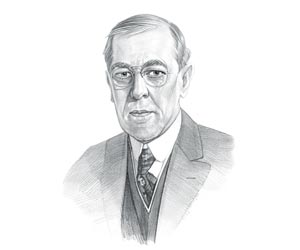|
|
|
|
|
Troops were needed for the US army and American industry had to be converted to war production. WW1 mobilization was achieved by mobilizing the troops and the workforce and creating new Federal agencies to regulate the economy and ensure the efficient use of national resources to further the war effort.
WW1 Mobilization Facts for kids: Fast Fact Sheet The 1917 Selective Draft Act was passed to increase the US Army The Lever Food and Fuel Act was passed by Congress The War Industries Board - WIB was created The Federal Fuel Administration agency was created Federal Possession and Control Act - Railroad Administration established Food Administration agency to conserve food by rationing The Federal Fuel Administration created to manage oil and coal. The Committee on Public Information to provide government propaganda The National War Labor Board was established The Espionage and Sedition Acts were passed The National War Labor Board (NWLB) was created Facts about
WW1 Mobilization WW1 began in Europe on July 28, 1914. The United States had adopted a policy of neutrality at the start of the Great War and did not enter conflict until April 6, 1917. The Federal Government was not prepared for war and rapid steps were required to ready the nation for the conflict. When the United States entered the war in 1917, the army and National Guard together only had just over 300,000 troops. The Agencies established by the federal government were given powers to regulate the nationís economy and industrial production. Congress passed a series of laws designed to support the federal agencies and to stifle what it deemed subversive anti-war opinion and activity. President Wilson needed to mobilize the country for war by both the mobilization of industry and of manpower. The Selective Service Act was passed on May 18, 1917 that required all men between the ages of 21 and 30 to register with locally administered draft boards for military conscription by national lottery. The national lottery randomly determined the order men were called before a local draft board. The local draft boards were in charge of selecting, or exempting, people from military service. 2.8 million men were inducted into the armed forces between 1917-1918 The War Industries Board (WIB) was created on July 28, 1917 coordinating the production of war materials and the purchase of war supplies. The Food Administration agency, headed by Herbert Hoover, was created to conserve food by rationing and boost agricultural output in the US. The Railroad Administration controlled the railroads and established ways to increase operating efficiency and modernize equipment The Federal Fuel Administration, headed by Harry Garfield, was created to manage and ration the nationís use of oil and coal. To conserve energy daylight-saving time was introduced and shorter workweeks for factories that did not manufacture war materials The Committee on Public Information (CPI), headed by George Creel, provided propaganda to rally the support of American citizens for all aspects of the war effort Congress created the National War Labor Board in March 1918 to prevent strikes that would disrupt production in war industries. |
| US American History |
| 1913-1928: WW1 & Prohibition |
|
|
|
|
|
First Published2016-04-19 | |||
|
Updated 2018-01-01 |
Publisher
Siteseen Limited
| ||
|
|

